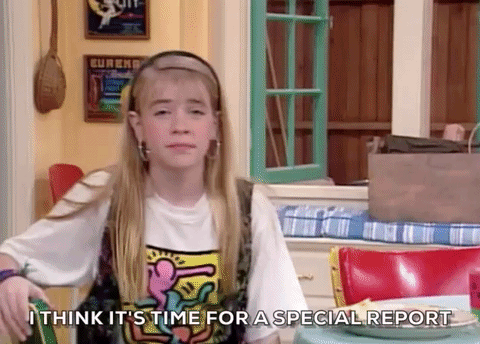
EOS is a public blockchain spearheaded by Daniel Larimer and his team at Block.one. Daniel has previous experience launching Bitshare and Steem, both of which used Delegated Proof of Stake (DPoS) consensus algorithms to achieve one of the highest transactions per second (TPS) amongst the existing Blockchains. Similarly, EOS achieves the highest TPS by using a BFT-DPoS consensus algorithm, and is used as a platform for decentralized applications (dapps).
Of course, there are already many for DApps. Most notably, Ethereum implemented smart contracts, introducing the DApp paradigm to the world. However, since Ethereum only achieves approximately 15 TPS, users experienced outages when DApp usage spiked.
Users create transactions on Ethereum as they interact with DApps. For each transaction, users need to pay a fee in Ether. This fee is also known as gas. The amount of gas needed will fluctuate depending on the miner’s preferences. This type of gas model prevents excessive transactions, ultimately preventing Distributed Denial of Service Attacks (DDoS).
However, the gas model is a barrier to optimal user experience: users need to own Ethers in order to use DApps; users need to decide how much gas should be paid; even after paying the right amount of gas, users need to wait for their transactions to be included by the miners. Users need to use centralized exchanges or LocalEthereum just to purchase Ether to pay gas.
On the other hand, EOS DApps do not require any transaction fees. Using the BFT-DPoS consensus algorithm, EOS block time is only 0.5 seconds, resulting in up to 3,996 TPS. Sudden high usage on any EOS DApps will not cause any slowdown for other DApps.
There are additional improvements that can be made on EOS. While transactions were processed on a single thread previously, from December 5th, 2018, EOS started supporting multi-threading. Additionally, all EOS smart contracts are interpreted and executed by the WebAssembly Interpreter. The Interpreter can be further improved to reduce CPU usage. Finally, the BFT-DPoS consensus algorithm on EOS must be fully synchronous. By changing this to an asynchronous consensus algorithm, finality on EOS can be reached quicker.
So why doesn’t EOS have any transaction fees? This is because service providers can own computing resources on EOS proportional to the amount of EOS they own. Therefore, in order to host users on their DApps, service providers need to constantly purchase or borrow EOS.
Why is EOS important?
The service providers of the Web 2.0 age purchased processing power, storage, network bandwidth from data centers or cloud platforms to provide their services. However, those that were under equipped had to face down time or data loss during outages at data centers or cloud platforms.

EOS is a decentralized cloud platform for DApps. Similar to how processing power, storage, and network bandwidth can be purchased or leased from data centers and cloud platforms, users receive processing power and network bandwidth proportional to how much EOS they own. When storing data on chain for DApps, RAM can be purchased using EOS. Additionally, the 21 block producers and standby block producers minimize the risk of downtime on EOS, offering 100% availability.
Proportional distribution of computing resources is similar to real estate ownership. As the owner of computing resources, people can lend them to service providers and receive fees from doing so. Resource rental can be done on Chintai or Chaince Platform, and on Resource Exchange (REX) once it is activated on EOS.
This system requires EOS to be locked up while DApps are deployed. As DApp usage increases, the service provider must lock up more EOS. This leads to increased demand for EOS, lower EOS liquidity, and constant increase in cost of keeping the DApps deployed. In order to address this, block producers receive EOS rewards to keep a balance between demand and supply. Service providers have to constantly purchase additional EOS, elsewise the computing resources they own will constantly decrease.
In conclusion, transaction fees on Blockchains have been substituted with inflation and ownership on EOS. The biggest advantage of this is that EOS service providers can provide services using a Blockchain without needing the users to be aware that they are interacting with a Blockchain. This maximizes user experience.
What makes EOS special?

EOS has a Constitution. This Constitution affects all actions taken by EOS holders. Voting for block producers, lending computing resources, requesting arbitration for hacks, protecting user rights, etc. All actions and situations that can occur are summarized in the Constitution. The Constitution brings out two distinct advantages for EOS.
First, people can understand the intentions of smart contracts and determine whether they are functioning as intended.
Smart contracts are made of code that machines can understand. They only execute according to the way the code is constructed. Machines have no way of understanding the intention behind smart contracts. Therefore machines cannot tell whether smart contracts are being executed as intended and which functions are bugs or part of the intended smart contract. The EOS Constitution helps create smart contracts where the intentions and functionality can be understood by humans before being signed and executed. As a result, people are able to determine incorrect functionality within smart contracts and request arbitration through the EOS Core Arbitration Forum (ECAF).
Second, all users abide by one Constitution, enabling efficient arbitration to occur.
The EOS Constitution is already included in the EOS software. Many core smart contracts (also called system contracts) have been created based on the Constitution. Abiding by the Constitution enables users to naturally abide by the core smart contracts. In conclusion, all EOS users follow one Constitution. When disputes arise, arbitrators are able to understand the original intent of contracts and resolve them efficiently.
The Constitution has been created as a Ricardian Contract. It can be read by both human and machine, and has been activated by signing with a private key on EOS. Block.one’s advisor and creator of Ricardian Contracts, Ian Grigg has stated that the Ricardian Contract legally binds EOS users. He added that EOS users should be more actively involved in ensuring that contracts are executed properly. This system has enabled a Governed Blockchain as envisioned by Ian Grigg.
Specifically, as stated by Article IX of the EOS Constitution, ECAF serves a similar role as the International Centre for Dispute Resolution (ICDR) of the real world. This independent group resolves disputes outside of court. The group consists of many voluntary experts, and only opens a case when requested. The ECAF must not offer arbitration decisions that only certain people, like lawyers, can understand and must offer solutions that are logical and concise. After a decision has been submitted by ECAF, the 21 block producers then must vote on the arbitration rulings from ECAF.
The EOS mainnet has been started on June 15th, 2018 with votes from the community. It has been autonomously operated with the Constitution created as a Ricardian Contract, the ECAF, and the 21 block producers and standby block producers. The EOS Constitution makes EOS unique compared to any of the other Blockchains.
Website: https://eos.fish/
eos.fish Telegram: https://t.me/eos_fish
Medium: https://medium.com/eosfish
Twitter: https://twitter.com/eosfish
Steemit: https://steemit.com/@eosfish
I just resteemed your post!
Why? @eosbpnews aggregates updates of active EOS BPs and conveniently serves them in one place!
This service is provided by @eosoceania. If you think we are doing useful work, consider supporting us with a vote :)
For any inquiries/issues please reach out on Telegram or Discord.
Downvoting a post can decrease pending rewards and make it less visible. Common reasons:
Submit
Congratulations @eosfish! You have completed the following achievement on the Steem blockchain and have been rewarded with new badge(s) :
Click here to view your Board
If you no longer want to receive notifications, reply to this comment with the word
STOPDownvoting a post can decrease pending rewards and make it less visible. Common reasons:
Submit